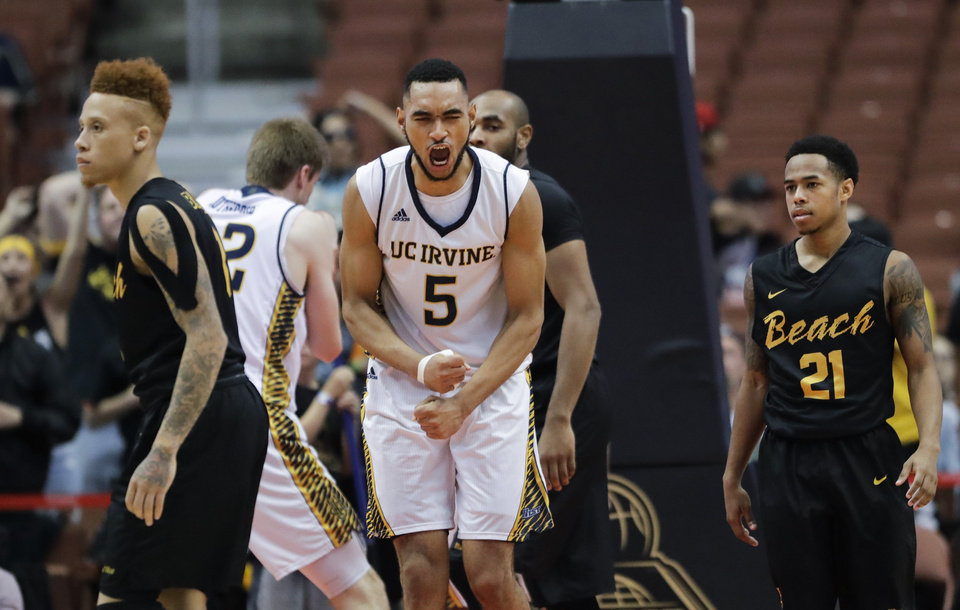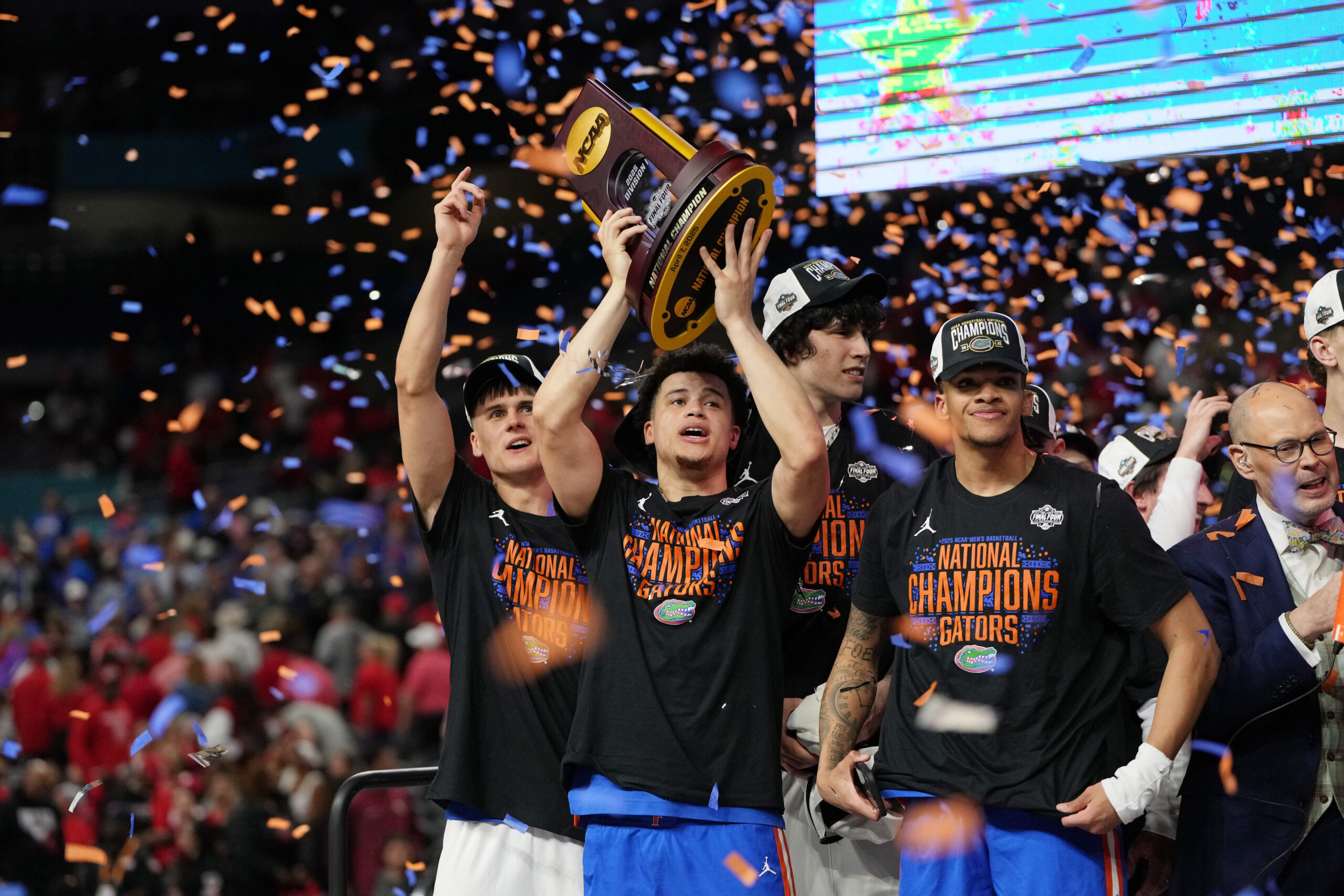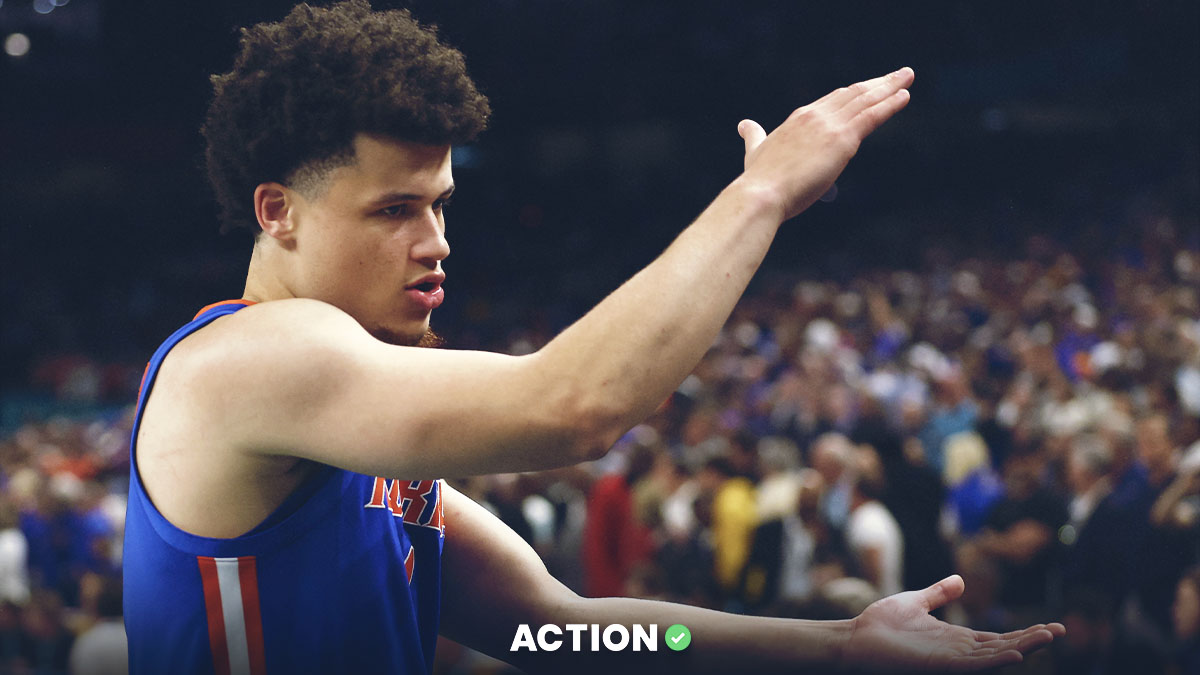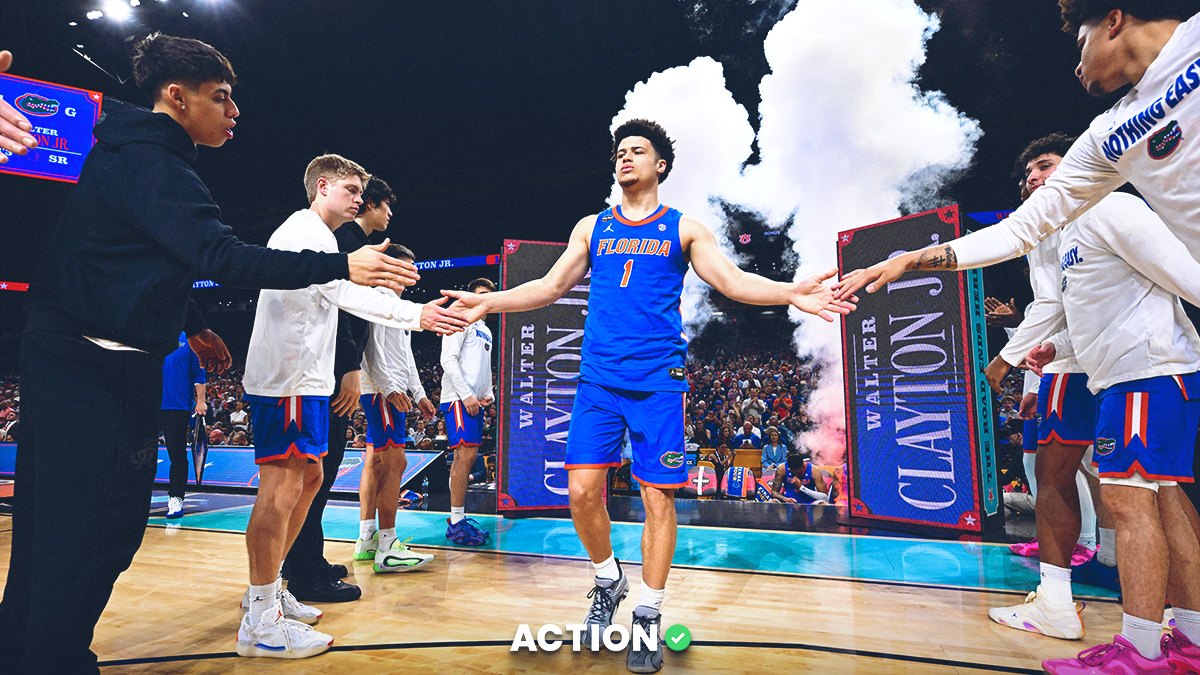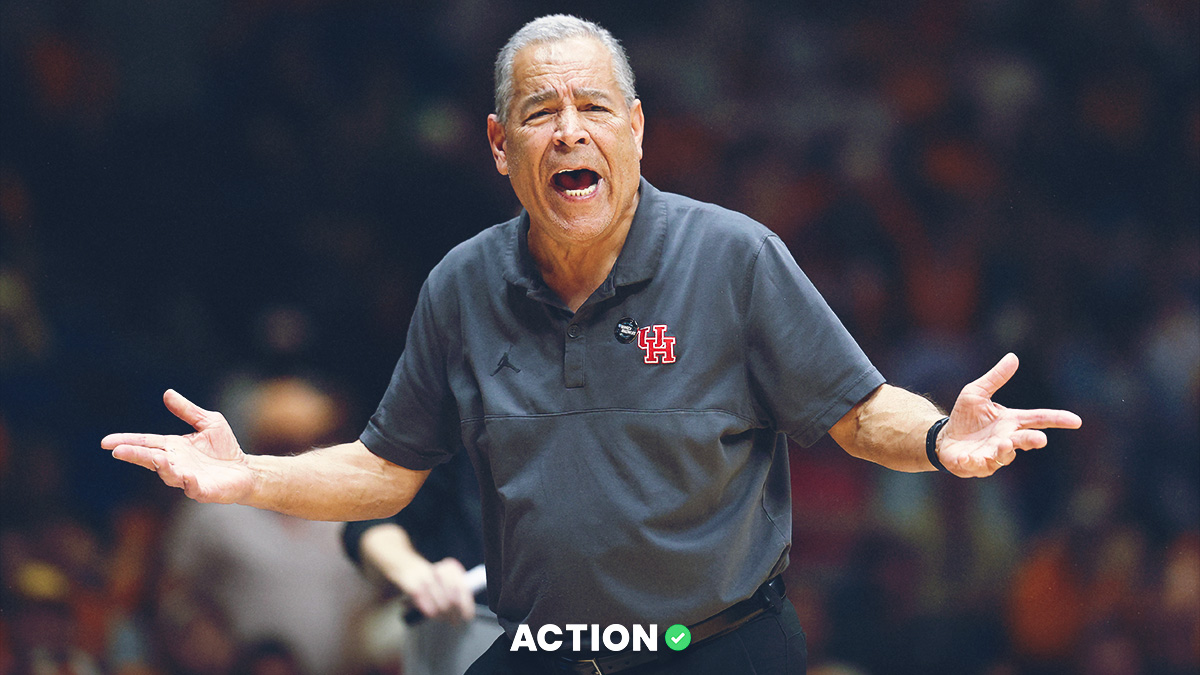1. The most predictable aspect of the Big West this season should be the league's unpredictability. The conference lost a lot of talent, as only two members of the All-Big West first and second teams return – Chima Moneke of UC Davis and Temidayo Yussuf of Long Beach State.
2. After two straight seasons ranked as the 13th best conference overall (per KenPom numbers), the Big West plummeted to 29th in 2016-2017. With the aforementioned loss of talent league-wide, I don't expect a bounceback season is in store for the league.
3. Despite the loss of overall talent, three key players return from injuries, and all three could contend for first-team honors. Gabe Vincent should be ready to return for UCSB by the start of the season after a knee injury midway through conference play last year. Josh Martin missed almost all of Cal Poly's season in 2016-2017 but returns after a stress fracture in his foot, while Hawaii's Mike Thomas redshirted after an offseason wrist injury.
4. After 313 wins in 19 seasons as head coach at UCSB, Bob Williams is out and former Arizona assistant Joe Pasternack is in. It will be strange not seeing Williams on the Thunderdome sideline, but after a brutal six-win season that was plagued by academic issues and injuries the Gauchos decided to move on. Pasternack has already proven to be whiz on the recruiting trail, and UCSB should compete in his first season.
PREDICTED ORDER OF FINISH:
1. UC Irvine– It's not too often that you see a mid-major conference's projected winner have no seniors, but that's where we're at in the Big West. The Anteaters were the league's most efficient offense and defense last season. With the Big West's best interior defender (Jonathan Galloway) and best perimeter defender (Brandon Smith) returning in Russell Turner's always outstanding schemes, the Eaters should once again be the league's best defensive team and among the best in the country, even. The offense, however, will be a different story, as production in the wake of Luke Nelson and Jaron Martin is not readily apparent. Eyassu Worku and Max Hazzard both gained valuable experience when Nelson missed a large chunk of the season with a hamstring injury, and they'll be expected to head up the backcourt in a dual PG look. Spencer Rivers and Evan Leonard will be expected to make significant leaps in their junior and sophomore seasons in the backcourt, respectively. The wing corps is a major question mark offensively as well. Smith is an elite Big West defender because of his versatility and ability to guard 1-4, but he posted a 78.8 ORtg, and failed to score in double figures in any game. 6-foot-4 Darrian Taylor has the highest ceiling on the wing, as he came to UCI as a three-star recruit, but he didn't log significant minutes last season and is likely still a work in progress. 6-foot-5 Justin Wertner is the most intriguing wing addition assuming he's 100 percent recovered from a back injury. Wertner's a lethal shooter, but he'll have to prove he can defend for Turner to give him significant minutes right away. The frontcourt should be a typical Turner frontcourt, even if he only has one 7-footer this year in Solomon Ruddell, a true freshman. Led by Galloway, UCI allowed the seventh-lowest field goal percent at the rim last season, and since Turner didn't have to protect Mamadou Ndiaye with an array of different zones, the Eaters were dominant on the glass, leading the league in both offensive and defensive rebounding rate. Galloway paired with Tommy Rutherford gives Turner two of the league's best rim protectors and rebounders, but they both have to step up their offensive production. Rutherford actually showed some flashes of strong play offensively in his freshman year and turned in an efficient first season. Sophomore Brad Greene adds considerable heft and depth to the frontline, and Utah State transfer Elston Jones should see immediate minutes. Collin Welp, son of former Golden State Warrior Christian Welp, is an intriguing freshman addition because of his floor-stretching capability at the 4. But again, you have to prove that you can defend if you're going to see meaningful minutes for Turner. Overall, the Eaters should continue to defend at an elite level, even nationally. But with the offensive production a huge glaring question mark teamwide, I'll be interested to see if Turner opens things up a bit. I mentioned he didn't have to play zone last year without Ndiaye, and this year without Ioannis Dimakopoulos he can maybe be more aggressive with pressure. While the Eaters turned in the league's best defense, allowing just .92 points per possession in league play, they had the league's lowest defensive turnover rate. If UCI can generate some transition buckets along with their exceptional offensive glass work, extra/extended possessions might be Turner's best path to consistent offense. It's worth noting that Russell Turner is a Don Nelson protege and actually used some "Nellie Ball" when he first arrived at UCI, but then he started landing mega height and went in a different direction.
2. Hawaii– Eran Ganot came into a very bizarre situation when he took the Hawaii job. He inherited a roster built to press, press, and press, which is essentially the opposite of how he prefers to run his scheme, relying more on the precise Randy Bennett motion offense he learned at St. Mary's. He also took over when Hawaii was facing NCAA sanctions, which resulted in a postseason ban that was ultimately repealed, and scholarship restrictions. Honestly, I don't know how Ganot had the Bows at .500 in the league with the roster he had in place last year. This year, we should see more of the methodical, extra pass offense, and his team is healthy with frontcourt star Mike Thomas back after a medical redshirt season, as is Drew Buggs at the point. Like UCI, Hawaii should be much better defensively than offensively, as the Bows lost Noah Allen, perhaps the most talented scorer in the league last year. Buggs and Brocke Stepteau give Ganot two options at the point, a useful commodity in his preferred offensive scheme. JUCO transfer Jaaron Stallworth could also come along at the point, but he enters his first D1 season at less than 100 percent. Off the ball in the backcourt, Sheriff Drammeh and Leland Green will be the primary options. Green's 45 percent shooting from 3-point range in league play came as a major surprise. 6-foot-6 Samuta Avea is an intriguing wing addition as a true freshman, and he could see immediate minutes with the lack of quality options at the 3 unless Ganot wants to go incredibly small with Green or incredibly big with 6-foot-8 stretch Jack Purchase. While Purchase is a lethally efficient perimeter threat, posting the second-highest true shooting percentage and eFG percentage in league play along with a 121 ORtg, he can't guard most (if not all) opposing 3s in the league. The rest of the frontcourt is among the best in the league. Thomas is an elite Big West athlete and rebounder, and Gibson Johnson should carry the scoring load on the block. Ido Flaisher and Zigmars Raimo, who reportedly had a very good summer, provide serviceable frontcourt depth. The bottom line is that Ganot has proven he can coach, and with a roster built more to his scheme in his third season, the Bows should be able to overcome any offensive deficiencies and contend for a league title, thanks to a solid frontcourt and better health.
3. Long Beach State– The Beach finished fourth at 9-7 last year, Dan Monson's seventh straight winning Big West season, and it felt like a disaster. Despite losing several key pieces, LBSU will likely be improved, and Monson once again reloaded with talented transfers. One of those transfers, Deishaun Booker, should start immediately at the point. Few coaches develop point guards like Monson (think Casper Ware, Mike Caffey, Justin Bibbins), and Booker is an old school "pass first" point. Finnish freshman Edon Maxhuni should see minutes on the ball as well. Off the ball, Monson's stable is unproven but incredibly versatile. The 2-4 positions are essentially interchangeable between newcomers Bryan Alberts, Ron Freeman, KJ Byers, and Jordan Roberts. Gonzaga transfer Alberts can play on the ball, off the ball, or on the wing and should be an immediate consistent scoring threat. Freeman is a former Kansas State recruit with a nice shooting touch at 6-foot-6, and Byers will likely be Monson's most versatile defender. Roberts, however, is probably the most talented of the bunch with a guard skill set as a 6-foot-8 freshman. Monson has even more depth at the position with former three-star recruits Jordan Griffin and Javonntie Jackson entering their sophomore seasons. The frontcourt should be a strength for Monson with Gabe Levin back from a season-ending injury and the rapidly improving Temidayo Yussuf returning. Levin has proven he can be an efficient post scorer in this league when healthy, and Yussuf blossomed offensively when Levin went down. How they'll play together is a bit of an unknown, and Yussuf recently had to have his knee scoped and will miss at least six weeks, per Monson. LaRond Williams and Mason Riggins are solid veterans who will keep the frontcourt afloat in Yussuf's absence and provide serviceable season-long depth. 6-foot-10 freshman Milos Apic could also be a factor early with Yussuf out as the stretch 4 that Monson has sort of lacked. Question marks abound for the Niners, but that's nothing new in Long Beach. Monson always schedules excessively tough in the nonconference, so we might not know what LBSU has until Big West play starts.
4. UC Davis– The good news for Jim Les and the defending Big West champs: They return potential conference player of the year Chima Moneke, the league's best frontcourt player. The bad news for Jim Les and the defending Big West champs: They only return Chima Moneke. That's a bit of an exaggeration, and Moneke is capable of carrying the Aggies in what should be another down year for the league. Moneke's just 6-foot-6, but he is one of the country's best defensive rebounders, had the league's second-highest block rate, and draws an absurd amount of contact in the paint. (He led the league in free throw rate.) Les will need veteran frontcourt presence Garry Goode to stay healthy beside Moneke. Goode's an underrated defender and can help Davis maintain a defense that held Big West opponents to .96 points per possession last year. 6-foot-10 Portland transfer Colin Russell should see minutes at the 5 as well. Les' backcourt is a total unknown entity outside of Siler Schneider, who will start off the ball this year. Schneider will have to improve his 91 ORtg, but he hits big shots and can handle the ball. JUCO transfer TJ Shorts is the likely starting point guard, while Joe Mooney and Rogers Printup are veterans who know the system. The most exciting addition is 6-foot-6 freshman wing Delveion Jackson. Les typically doesn't give freshmen a lot of run, but with this roster, he probably he has to, and Jackson is too talented to keep on the bench for long. Last season Les capitalized with one of the oldest rosters in the country. This year it's going to be a totally different story, but the presence of Moneke alone should keep the Aggies in the top half of the league.
5. Cal Poly– The Mustangs were a team I had pegged as a sleeper title contender in last year's preseason preview, but an early injury to frontcourt stud Josh Martin and the sudden departure of point guard Jaylen Shead derailed Cal Poly's season. A hopefully healthy Martin returns and should be an all-conference force, and the injuries last year forced the early development of what should be key contributors this year. After Shead left, it took Donovan Fields a little bit to adjust to being thrust into a more leading role as a primary ball handler, but he finished the year as the league's eighth-most efficient offensive player and had the fourth-lowest turnover rate in league play. The latter stat should be highlighted and underlined if you're going to be a point guard in Joe Callero's offense. Last season marked the first year since 2011-12 that the Mustangs didn't finish in the top 15 nationally in offensive turnover rate… they finished 32nd and still had the league's lowest turnover rate. Victor Joseph will return as Fields' running mate, giving Cal Poly the smallest backcourt in the league, but Joseph is Callero's most potent off ball scorer, and can break defenses down off the dribble. The wings are a bit of an issue for Cal Poly. 6-foot-7 Kuba Niziol can play on the perimeter, but he looked like a liability defensively when he was out there on the other end. Injuries have limited Luke Meikle to something of a spot up stretch 4. The frontcourt is buoyed by the return of Martin, who can routinely post double-doubles when healthy and can step out on the perimeter against less athletic 4s. At the 5, Hank Hollingsworth came on strong as a rim protector at the end of last year, and Aleks Abrams is a senior who knows Callero's system. 6-foot-9 freshman Karlis Garoza has a Euro skill set, and should see immediate minutes as more of an offensive threat. The Mustangs not only had bad injury luck, but they had some unlucky three point variance as well. They shot just 32 percent from 3 (while attempting them at the highest rate in the league), while opponents shot just under 40 percent against them. From what I noticed from streaming Big West games, Callero largely abandoned his tricky matchup zone as he worked in a new backcourt, and the Mustangs finished dead last in defensive efficiency, allowing 1.08 points per possession. I wonder if it returns this year with more experienced players/better health.
6. Cal State Fullerton– It was quite a turnaround year for the Titans, as they finished at 10-6 in the league and were within a heartbeat of playing for a tournament title. The strong finish to the season and postseason appearance in the CIT gave Dedrique Taylor a contract extension in what was a make or break year for him in Fullerton. However, it's likely going to be hard for Taylor to build on that momentum after losing Tre Coggins and Lionheart Leslie, two essential members of the backcourt. The scoring vacuum left by Coggins will be filled by Khalil Ahmad, a do everything wing that can play 2-4. Austen Awosika should slide into Leslie's point guard role, while athletic slasher Kyle Allman can also help replace Coggins' offensive production. 6-foot-7 sophomore Jackson Rowe is due for a breakout year as more shots should be available. Rowe is a plus rebounder and plus passer out of the 4 spot. If he develops a more consistent jump shot, he could be headed for a significant offensive jump. A pair of 6-foot-5 sophomore wings provide depth and versatility. Davon Clare is a solid rebounder and defender, while Dwight Ramos is a spot shooter. The frontcourt outside of Rowe is a major concern. Arkim Robertson is a veteran presence at the 5, but hasn't been asked to provide much besides rim protection. Finishing 10-6 with an offense that scored at sub-1.00 points per possession is a telling indicator of how down the league was last year, but the Titans were more than solid defensively, producing the league's highest turnover rate, which alleviated some of the offensive lulls. Allman and Ahmad will have to really improve their efficiency as the go-to scorers, and that might be difficult with a new point guard in place. That makes it difficult to forecast continued improvement from CSUF this year.
7. UC Riverside– It seems like I've said this about nearly every team, but injuries and suspensions took a toll on Dennis Cutts' Highlanders last season. But if everyone is healthy and on the same page, there's room for improvement this year. Sophomore point guard Dikymbe Martin is arguably the best point guard in the league this year and should be poised for a massive sophomore season, especially with Chance Murray returning off the ball. Martin is an elite passer and penetrator, and should benefit from having Eric Rwahwire, DJ Sylvester and Marcus Berkley healthy in the backcourt/wings in addition to Murray. Rwahwire particularly will be relied upon to make a big leap. Former Cal commit Alec Hickman will also be a factor in the backcourt as a freshman. Cutts has proven to be an underrated defensive coach, as his use of a tricky matchup zone has been effective. UCR held conference foes under 1.00 points per possession last year, and that should continue with a solid returning frontcourt manned by Brandon Rosser, Alex Larsson, and Menno Dijkstra, and the addition of BC transfer Idy Diallo. However, Dijkstra is the only offensive threat of the bunch and can be a matchup problem as a stretch 7-footer. With Martin returning at the point, the ceiling is fairly high for the Highlanders, but the offense will have to improve drastically to put title contention within the realm of possibility.
8. UCSB– I'm taking a bit of a flyer on the Gauchos in Joe Pasternack's first season at the helm insomuch that I'm not picking them last after a historically awful season. Things went completely off the rails in Santa Barbara last year, as academics sidelined much of the frontcourt and injuries took away a lot of offensive firepower. Ultimately, it led to the dismissal of UCSB's all-time winningest coach, Bob Williams. Pasternack will have the luxury of getting Gabe Vincent back from injury, and he's reportedly been cleared to play to start the year. He also has Jalen Canty and Ami Lakoju back from the academic situation that sidelined them last year. Pasternack should have some scoring punch off the ball with Vincent back and Rice grad transfer Marcus Jackson coming in. The real issue is at point guard, where Pasternack doesn't appear to have a proven option, so the onus likely falls on sophomore Max Heidegger. 6-foot-5 Clifton Powell could also be an option in a bigger lineup. Fellow 6-foot-5 sophomore Christian Terrell should also be a more regular contributor in the backcourt. Leland King comes in from Nevada after finding playing time scarce in Reno. He figures to slot in at the 3/4. If he delivers on the promise of his freshman year at Brown, where he was a monster on the glass and around the rim, the frontcourt might be OK. With Lakoju and Canty returning to the frontcourt, 6-foot-11 Alex Hart can slide to his more natural stretch 4 position and should be matchup problem on the perimeter. With Lakoju and a healthy Jarriesse Blackmon, Pasternack will surely emphasize an Arizona style defense that places a high premium on forcing two-point jump shots by combining stout one-on-one rim protection and aggressive perimeter defense. In short, you can say goodbye to the ubiquitous Bob Williams 3-2 zone. Offensively, Pasternack will likely employ a Bob Knight-esque motion offense, as Knight was his coaching mentor from his days on IU's bench as a student manager. Whatever he runs, it has to be better than the 343rd ranked offensive efficiency the Gauchos churned out last year. The offense even dipped to .88 points per possession in league play, the worst Big West offensive output in the KenPom era.
9. CSUN– It should be a long season for Reggie Theus and the Matadors, as the constantly revolving door in Northridge continues to spin. Gone are all the high-major transfers from last year, in are an entirely new slew of JUCOs and D1 transfers looking for playing time. Theus' offensive attack is built solely on slashers and running in transition. The 'Dors were fifth nationally in free throw rate, second to last in 3-point attempt rate and played at the fastest pace in the league. That's Theus' brand of basketball in a nutshell. Oh, and they were abysmal defensively. Again. Tavrion Dawson is one of the better frontcourt players in the league, and he'll be shouldering the load early and often for CSUN, and Michael Warren is a versatile 6-foot-5 wing and Theus' best perimeter defender. Outside of those two, I'm not really sure what Theus has on this roster. His son should see a bigger role on the wing, and TCU transfer Lyrik Shreiner could lead the team in scoring as an off the ball slasher in Theus' penetration heavy offense. 6-foot-7 3/4 hybrid Anthony Swan is another transfer (George Washington) who should contribute immediately, as should highly touted 6-foot-7 wing Lamine Diane. Terrell Gomez could be the most vital newcomer, as the 5-foot-8 freshman waterbug will likely run the point from day one. This is a typical CSUN team all in all. They have a lot of talent top to bottom, but I have no idea, and little to no faith, that it will all come together on the court.
FINAL OUTLOOK: In what should be another down year for the league, chaos might reign. However, UC Irvine's defense is the most bankable aspect of the entire league, and the Eaters should stay on top of the standings. Hawaii and LBSU are potential CIT teams.
BIG WEST PLAYER OF THE YEAR: Chima Moneke, UC Davis
ALL BIG WEST FIRST TEAM:
Chima Moneke, UC Davis
Gabe Levin, Long Beach St
Tavrion Dawson, CSUN
Dikymbe Martin, UC Riverside
Gibson Johnson, Hawaii
ALL BIG WEST SECOND TEAM:
Jonathan Galloway, UC Irvine
Eyassu Worku, UC Irvine
Mike Thomas, Hawaii
Khalil Ahmad, CSUF
Josh Martin, Cal Poly
Be part of the Action
Download the Sports Action app at the App Store or Google Play


